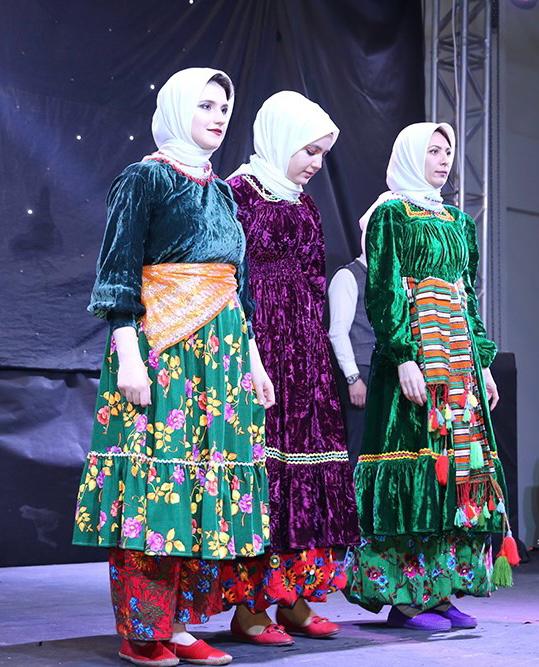Sarıveliler traditional clothing is a conventional attire for women unique to the Sarıveliler district of Karaman province, shaped within a historical and cultural context. These garments were registered as a trademark of origin under Industrial Property Law No. 6769 and are produced exclusively within Sarıveliler, reflecting the cultural memory of the local community.

Sarıveliler Traditional Clothing (Karaman Governorship)
Historical Background
Sarıveliler, formerly known as Başdere, is documented as a settlement as early as the 14th century. Records from the Tol Madrasah dated 1344 indicate that the region was established by Turkmen tribes, and the Yörük lifestyle continues to this day. Livestock activities in the highlands have fostered a life intertwined with the colors of nature, which are reflected in the Sarıveliler traditional clothing.
Clothing Components
Sarıveliler traditional clothing is worn by women during social ceremonies, national celebrations, weddings, and religious holidays. The outfit consists of the following items:
- Yazma: Headscarf used in daily life, chosen to match the fistan in color.
- Pullu Ak Çember: Embroidered or plain headscarf; younger women prefer embroidered, older women plain.
- Sarı Saçaklı Çember: Cotton or woolen 1x1 m cloth used as a headscarf or sash.
- Elastic Fistan: Summer fistan made of jersey or printed fabric, winter version in velvet; features a fitted waist and flared skirt.
- Vest: Knitted or sewn from velvet or wool yarn; velvet vests are lined and adorned with metallic trims.
- Darabulus Belt: Silk belt in green, orange, and white with tassels; wrapped three times around the waist.
- Topak Don (Under Skirt): Worn under the fistan; ankle-length for older women, knee-length for brides, typically two-colored.
These components have been transmitted culturally from the era of the Karamanid Beylik to the present, preserving distinctive regional characteristics.
Production Method
Clothing is custom-made in Sarıveliler using skilled techniques. Approximately 100–150 sets are produced annually. The production process includes:
- Çulhalık Weaving: Yazma, çember, and fringed cloths were traditionally woven on home looms; although ready-made fabrics are used today, traditional weaving is still known.
- Needle Lace and Bead Decoration: Edges of yazma and çember may be embellished with needle lace or beads.
- Fistan Sewing: Waist is fitted with an internal elastic; metallic ribbons added to the skirt hem.
- Vest Knitting and Sewing: Wool vests are crocheted from hand-spun yarn; velvet vests are lined and trimmed with metallic ribbons.
- Darabulus Belt Weaving and Decoration: Silk belts are decorated with buckles or beads.
- Topak Don Sewing: Constructed in two parts with divit fabric and lining; colors coordinated with the fistan.
Geographical Boundary and Inspection
Production of Sarıveliler traditional clothing is restricted to Sarıveliler district. This ensures the cultural authenticity of the product and is legally protected under the trademark of origin. Inspections are conducted at least once a year under the coordination of the Sarıveliler District Directorate of Agriculture and Forestry, evaluating fabric type, color harmony, decoration style, and production location.


